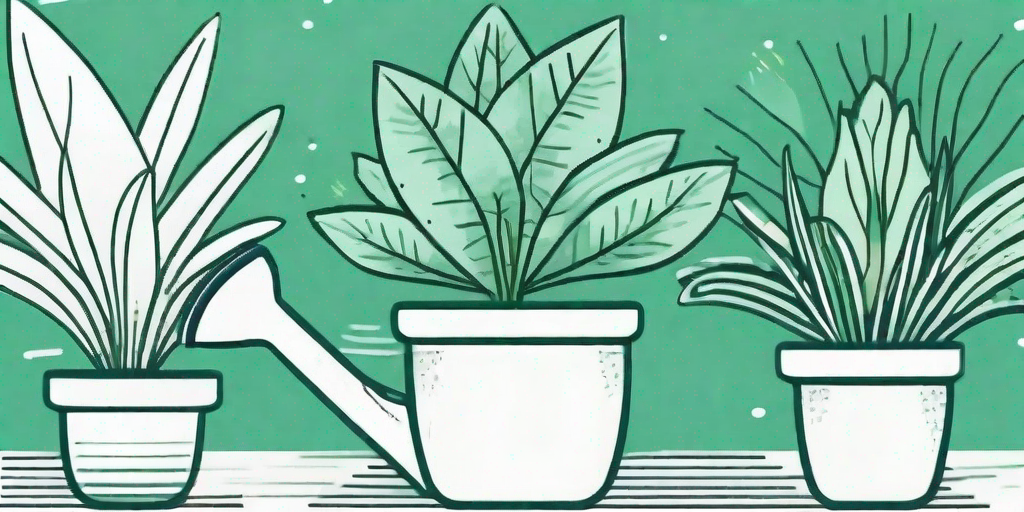
The Piggyback Plant, scientifically known as Tolmiea menziesii, is a quirky houseplant that's as fun to grow as it is to say. With its peculiar growth habit and easy-care nature, it's a plant that will surely add a touch of whimsy to your indoor garden. But how do you grow and care for this delightful green companion? Well, buckle up, plant enthusiasts, because we're about to embark on a botanical journey that's as exciting as a piggyback ride.
Understanding the Piggyback Plant
Before we dive into the nitty-gritty of plant care, let's take a moment to appreciate the unique charm of the Piggyback Plant. This perennial plant is native to the forests of the Pacific Northwest, where it thrives in the cool, damp understory. It's known for its peculiar growth habit, where new plantlets form on the mother plant's leaves, giving the impression of a piggyback ride. Hence, the name.
But don't let its playful name fool you. The Piggyback Plant is a serious contender in the world of houseplants. It's hardy, adaptable, and can tolerate a range of indoor conditions, making it a great choice for novice and experienced gardeners alike. Plus, its lush, heart-shaped leaves add a touch of greenery that can brighten up any space.
The Art of Growing a Piggyback Plant
Now that we've gotten to know our leafy friend a little better, it's time to roll up our sleeves and get our hands dirty. Growing a Piggyback Plant is a rewarding experience, and with the right care, your plant will thrive and produce an abundance of piggybacking plantlets.
Choosing the Right Pot
When it comes to choosing a pot for your Piggyback Plant, size matters. These plants like to spread out, so choose a pot that's wide rather than deep. A shallow pot with good drainage is ideal. And while we're on the subject of pots, let's not forget about the importance of potting mix. A well-draining mix that's rich in organic matter will keep your plant happy and healthy.
Light and Temperature Requirements
Piggyback Plants are not fussy about light. They can tolerate low light conditions, but they'll be happiest in bright, indirect light. As for temperature, they prefer cooler conditions, similar to their native forest habitat. So, keep your plant away from hot, dry air and sudden temperature changes.
Watering and Feeding
Like any good houseguest, the Piggyback Plant doesn't like to be overwatered. Wait until the top inch of soil is dry before watering. And when it comes to feeding, a balanced houseplant fertilizer applied during the growing season will do the trick.
Caring for Your Piggyback Plant
So, you've got your Piggyback Plant all potted up and ready to grow. But how do you keep it looking its best? Here are some tips for keeping your plant healthy and happy.
Pruning and Propagation
Pruning your Piggyback Plant is a cinch. Simply remove any yellow or brown leaves to keep the plant looking fresh. And when it comes to propagation, it's as easy as pie. Just remove a plantlet, pot it up, and watch it grow. It's like getting a new plant for free!
Dealing with Pests and Diseases
While the Piggyback Plant is generally pest-free, it can sometimes attract aphids or spider mites. If you notice any pests, simply wipe the leaves with a soapy water solution. As for diseases, root rot can be a problem if the plant is overwatered. So, remember to let the soil dry out between waterings.
Frequently Asked Questions
- Is the Piggyback Plant toxic to pets?
No, the Piggyback Plant is non-toxic to pets. However, it's always a good idea to keep houseplants out of reach of curious pets.
- How often should I repot my Piggyback Plant?
Repot your plant every 2-3 years, or when it outgrows its current pot.
- Why are the leaves on my Piggyback Plant turning yellow?
Yellow leaves can be a sign of overwatering. Cut back on watering and make sure your plant is draining properly.
In conclusion, the Piggyback Plant is a charming and easy-to-care-for houseplant that's sure to bring a touch of whimsy to your indoor garden. With its unique growth habit and lush, heart-shaped leaves, it's a plant that's as fun to grow as it is to look at. So, why not give the Piggyback Plant a ride in your home? You won't regret it!















